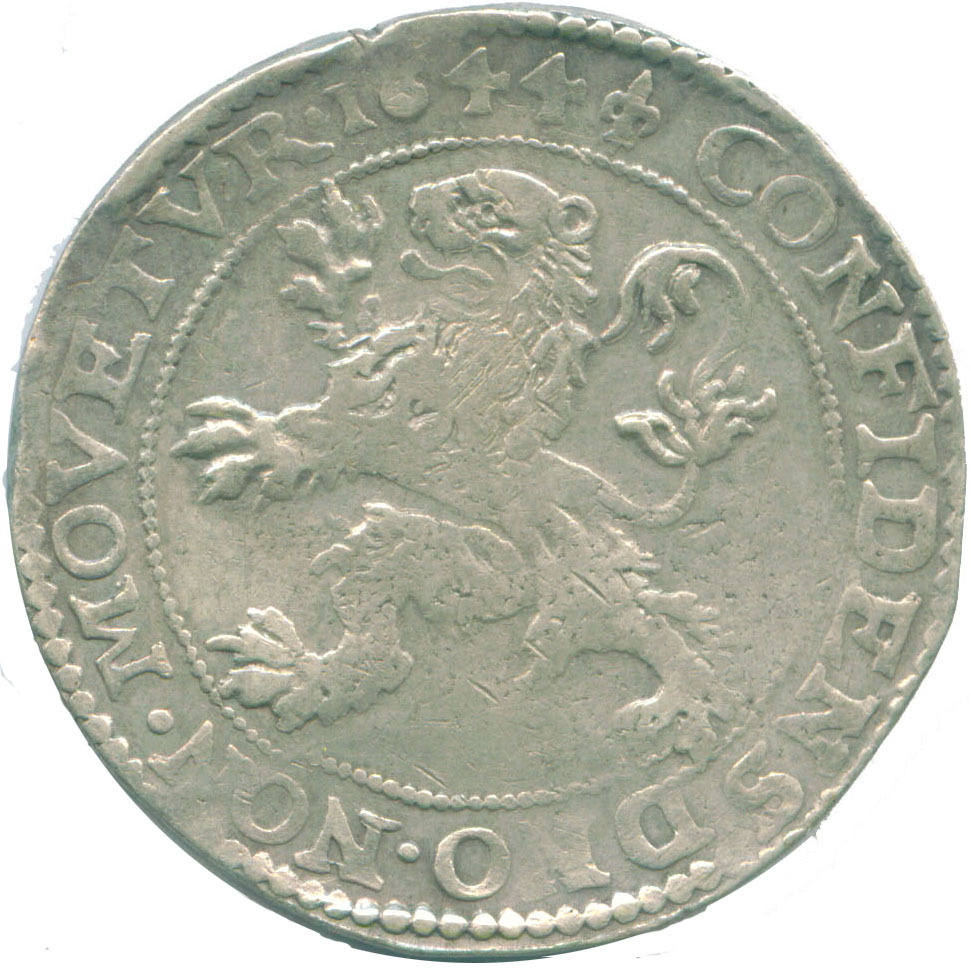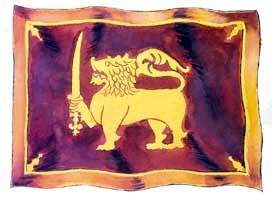| SPECIFICATIONS | |
| Denomination | 48 Stuivers |
| Alloy | Silver.750 |
| Type | Struck |
| Diameter | 40.5 mm |
| Thickness | 2.4 mm |
| Weight Legal | 27.68 gms |
| Weight | 26.9 gms |
| Shape | Round |
| Edge | Plain |
| Die-Axis | 190° |
| Mint | West Friesland |


|

| 
| ||||||||||||||||||||||||
| West Friesland : Verk 66.4 DEL#836 KM#14.2 | ||||||||||||||||||||||||||
This 17th century Leeuwen-daalder which is the same weight as a reals of eight was reckoned as 48 Stuivers and popularly known as Lion Dollars and in fact the origin of the name Dollar. They were replaced in the 18th century by the heavier coins with finer silver the Rijks-daalder (29.0 grams of .885 fine silver passing at 50 stuivers), and the Ducatoon or silver rijder (31.82 grams of 0.92 silver passing at 60 stuivers or 3 guilders).
Delmonte in The Silver Benelux says 678,390 of the Lion Daalders
were minted in period 1643-1649 in West Friesland indicated as WES
or WEST or WESTF. This type issued from 1606-1700.
Codrington X§26 Lion Dollar from 1606; lists coin from United Provinces,
with specific reference to this issue of
West Friesland (WES 1644), and Gelderland (GEL 1653) are found
in Lanka,.
 The Heraldric Lion was also on the Royal Standard of
Sri Wickrema Raja Sinha depicting a yellow lion passant
holding a sword in its right paw on a red background shown on right which was
adopted
with a few alterations as the National Flag of Lanka at Independence in 1948
The Heraldric Lion was also on the Royal Standard of
Sri Wickrema Raja Sinha depicting a yellow lion passant
holding a sword in its right paw on a red background shown on right which was
adopted
with a few alterations as the National Flag of Lanka at Independence in 1948
There appear to be variations in the design of the lion between coins
of six provinces and with period in the 17th century when they were
minted. The Lion is similar that illustrated for West Friesland in Krause
and Belmonte, which is differenct from some of the other Lion Daalders.
Lion daalders were usually produced from thin planchets that did not fully fill the thickness of the dies, thus they were often weakly struck. This dollar is 3% under-weight but that could be easily accounted for by the probable light shaving of the edge often seen in coins of this age.
See discussion of a probably contemporary counterfeit coin from early American colonies where the daalder was the first silver dollar.
The VF- condition coin was scanned at 600 dpi and displayed at 150 dpi. It was purchased on ebay in 2001 September from a Belgian seller in this cleaned condition is not one that circulated in Lanka. He had won from "van Alsenoy' a large coin-auctionhouse in Belgium.
Text edited from
* Ceylon Coins and Currency By H. W. Codrington. Colombo 1924
Page 130 Chapter IX-X Dutch